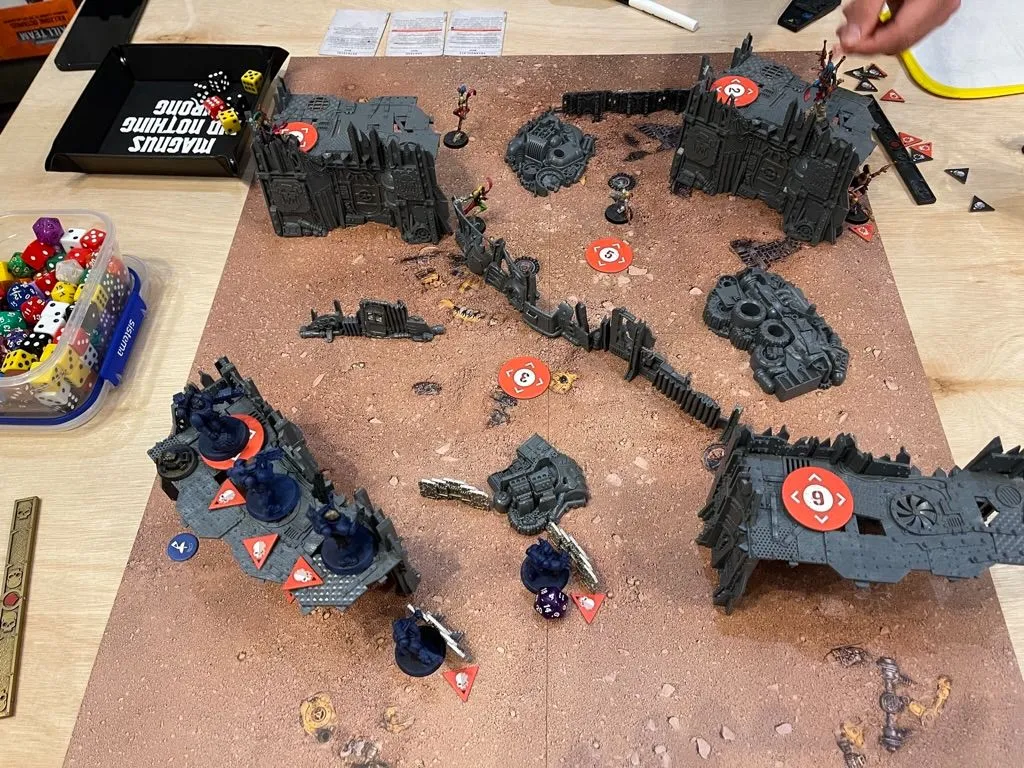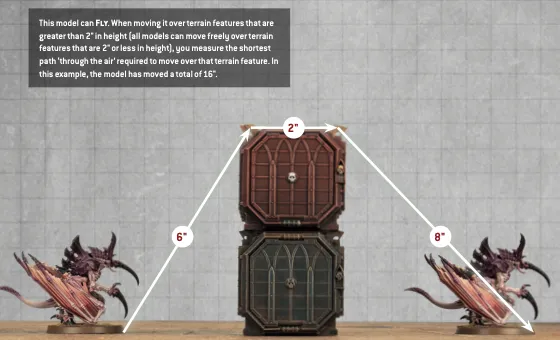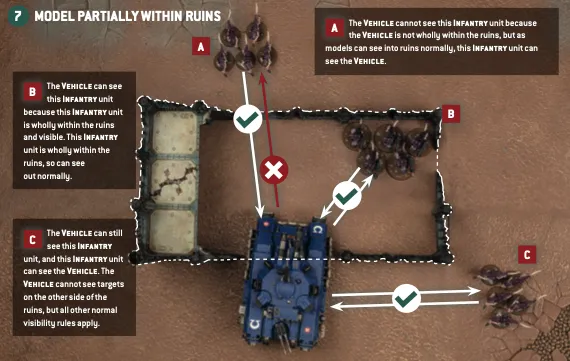
Warhammer 40K is a fascinating, complex, and intricate tabletop game, and a large part of that complexity comes from terrain rules and the cover they provide.
Battlefield success isn't just about studying your Space Marines, your Tyranids, or your Eldar. Or painting your Orks go-faster red. The terrain can be a silent game-changer, a secret weapon if you know how to use it well. So, let's get to grips with this often-underestimated part of Warhammer 40K.
Fair warning, though! The rules we're going to dive into are based on the 10th edition. As you well know, Games Workshop likes to keep us on our toes with errata, so keep an eye out for changes.
Understanding Line of Sight in Warhammer 40k 10th Edition
Line of sight is crucial in Warhammer 40K. It's not just about what your units can blast, it's about what they can see. 10th Edition uses a true line of sight. In layman's terms, if any point on your model can "see" any point on an enemy model, you've got line of sight and can shoot.
Sounds easy, right?
Well ... remember, anything in between, like other models or terrain, can block your view.
Still, as long as there's one unblocked line between your model and the enemy, you've got line of sight. Now, if your line of sight covers only some parts of the target, that's partial line of sight, which brings us into the realm of cover, which we will ... cover ... shortly.
Warhammer 40K Movement and Terrain
Terrain isn't just there just to look good and hide behind like giant well-armed wusses, it plays a significant role in how your units move across the battlefield.
If you've got vertical terrain elements like walls or floors in ruins that are two inches or less, your troops can just breeze through. Taller than two inches, though? That's a climb right there.
Flying models have a bit more flexibility, of course. They can move diagonally instead of straight up a vertical surface.

But remember regardless the same rules apply – they need to end their move on top of the terrain, not halfway up.
Cover - The Defensive Benefits of Terrain in Warhammer 40K
Cover is where terrain can really swing the tide of battle. It's not just about hiding and stealth, it's about your character's survival. Any model that's partially obscured by terrain, or wholly within it, can gain cover. That my friends gives you a +1 bonus to saving throws - a potential lifesaver.

Cover applies to all types of units, not just the foot soldiers. Event Titans can benefit.
Unfortunately that +1 bonus can't improve a save of 3+ to a 2+ after the Armour Penetration is calculated.
Different Terrain, Different Rules
Not all terrain is created equal.
In the grim darkness of the far future, a crater is not just a crater, and a ruin is not just a ruin.
For example, craters only provide cover for any infantry units wholly inside them. On the other hand, ruins affect the line of sight and offer cover in a variety of ways.
Ruins can completely block the line of sight if a model is not wholly within the terrain. They also provide cover for those models partially obscured by the terrain's sight-blocking elements.
Even aircraft have their own special rules when dealing with ruins.
Conclusion
Getting caught up with the Warhammer 40k 10th edition changes in time for release day might seem like trying to appreciate Necron Cryptek poetry but stick with it because understanding them will give you the edge over your opponents on the battlefield.
I hope this deep dive has helped clarify things for you. Of course, if you have more questions, just ask!